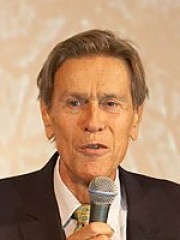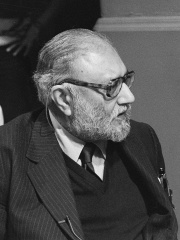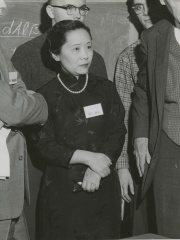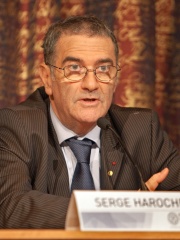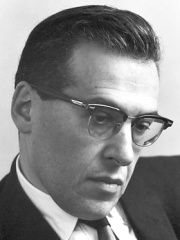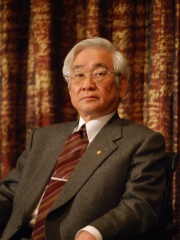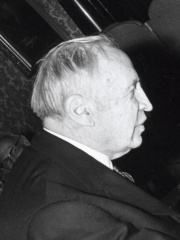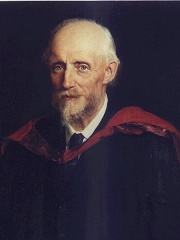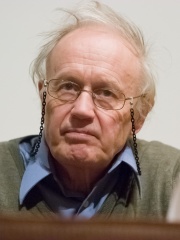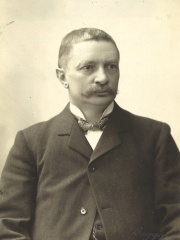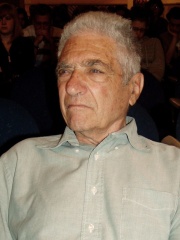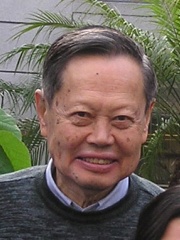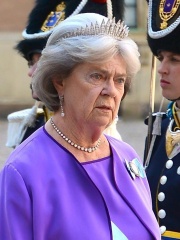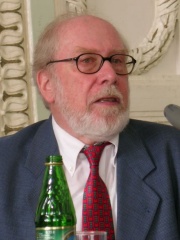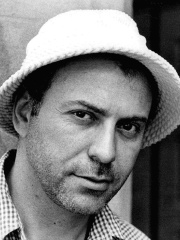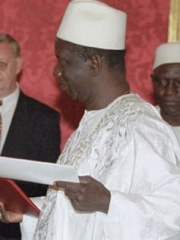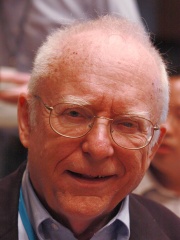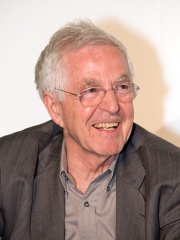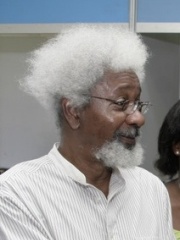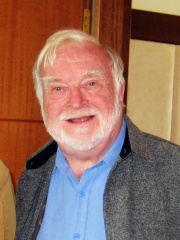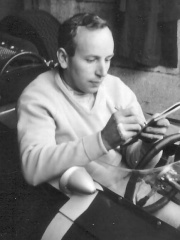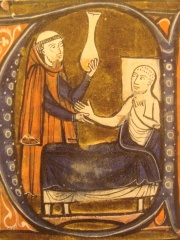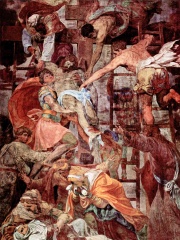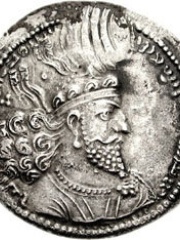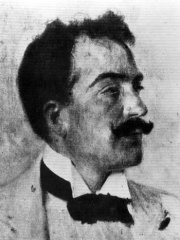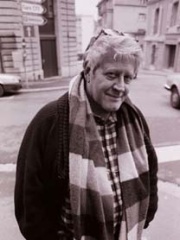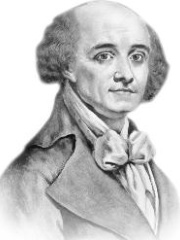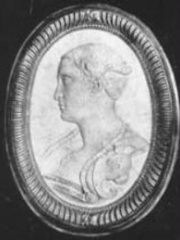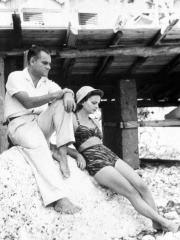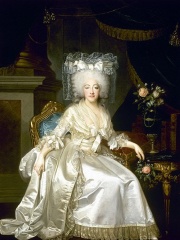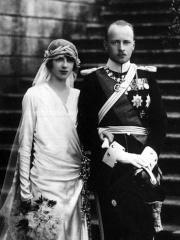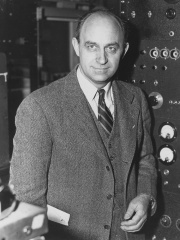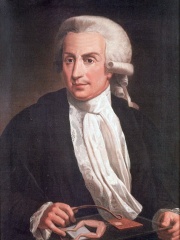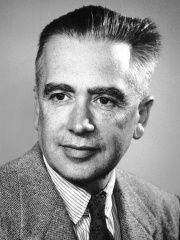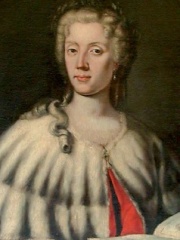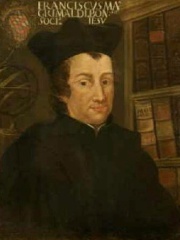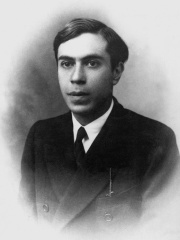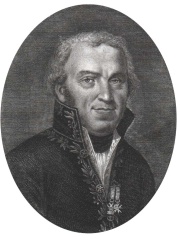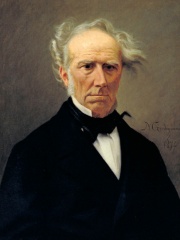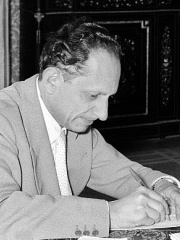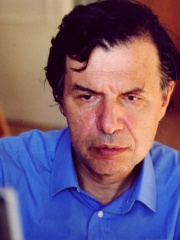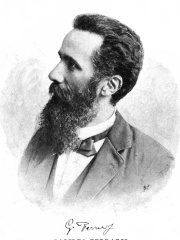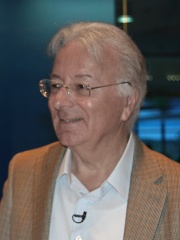Physicist
Carlo Rubbia
1934 - today
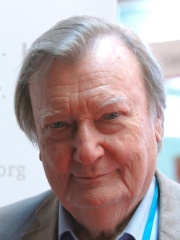
 Carlo Rubbia
Carlo Rubbia
Carlo Rubbia (born 31 March 1934) is an Italian particle physicist and inventor who shared the Nobel Prize in Physics in 1984 with Simon van der Meer for work leading to the discovery of the W and Z particles at CERN. Read more on Wikipedia
His biography is available in 72 different languages on Wikipedia (up from 71 in 2024). Carlo Rubbia is the 263rd most popular physicist (up from 276th in 2024), the 1,010th most popular biography from Italy (up from 1,145th in 2019) and the 9th most popular Italian Physicist.
Carlo Rubbia is most famous for winning the Nobel Prize in Physics in 1984 for his work on the discovery of the W and Z particles.
Memorability Metrics
Page views of Carlo Rubbia by language
Among Physicists
Among physicists, Carlo Rubbia ranks 263 out of 851. Before him are Pierre-Gilles de Gennes, Abdus Salam, Chien-Shiung Wu, Serge Haroche, Julian Schwinger, and Toshihide Maskawa. After him are John Hasbrouck Van Vleck, Osborne Reynolds, Anthony James Leggett, Johannes Rydberg, Jack Steinberger, and Yang Chen-Ning.
Most Popular Physicists in Wikipedia
Go to all RankingsPierre-Gilles de Gennes
1932 - 2007
HPI: 69.57
Rank: 257
Abdus Salam
1926 - 1996
HPI: 69.53
Rank: 258
Chien-Shiung Wu
1912 - 1997
HPI: 69.53
Rank: 259
Serge Haroche
1944 - Present
HPI: 69.50
Rank: 260
Julian Schwinger
1918 - 1994
HPI: 69.40
Rank: 261
Toshihide Maskawa
1940 - 2021
HPI: 69.39
Rank: 262
Carlo Rubbia
1934 - Present
HPI: 69.34
Rank: 263
John Hasbrouck Van Vleck
1899 - 1980
HPI: 69.29
Rank: 264
Osborne Reynolds
1842 - 1912
HPI: 69.26
Rank: 265
Anthony James Leggett
1938 - Present
HPI: 69.13
Rank: 266
Johannes Rydberg
1854 - 1919
HPI: 69.11
Rank: 267
Jack Steinberger
1921 - 2020
HPI: 69.08
Rank: 268
Yang Chen-Ning
1922 - 2025
HPI: 68.98
Rank: 269
Contemporaries
Among people born in 1934, Carlo Rubbia ranks 53. Before him are Princess Margaretha, Mrs. Ambler, Niklaus Wirth, Alan Arkin, Lansana Conté, John L. Hall, and Albert Speer. After him are Wole Soyinka, Mihaly Csikszentmihalyi, Yasuo Takamori, John Surtees, Masao Uchino, and Jonas Savimbi.
Others Born in 1934
Go to all RankingsPrincess Margaretha, Mrs. Ambler
POLITICIAN
1934 - Present
HPI: 70.01
Rank: 47
Niklaus Wirth
COMPUTER SCIENTIST
1934 - 2024
HPI: 69.80
Rank: 48
Alan Arkin
ACTOR
1934 - 2023
HPI: 69.77
Rank: 49
Lansana Conté
POLITICIAN
1934 - 2008
HPI: 69.70
Rank: 50
John L. Hall
PHYSICIST
1934 - Present
HPI: 69.65
Rank: 51
Albert Speer
ARCHITECT
1934 - 2017
HPI: 69.62
Rank: 52
Carlo Rubbia
PHYSICIST
1934 - Present
HPI: 69.34
Rank: 53
Wole Soyinka
WRITER
1934 - Present
HPI: 69.29
Rank: 54
Mihaly Csikszentmihalyi
PSYCHOLOGIST
1934 - 2021
HPI: 69.24
Rank: 55
Yasuo Takamori
SOCCER PLAYER
1934 - 2016
HPI: 69.19
Rank: 56
John Surtees
RACING DRIVER
1934 - 2017
HPI: 69.11
Rank: 57
Masao Uchino
SOCCER PLAYER
1934 - 2013
HPI: 69.07
Rank: 58
Jonas Savimbi
MILITARY PERSONNEL
1934 - 2002
HPI: 69.06
Rank: 59
In Italy
Among people born in Italy, Carlo Rubbia ranks 1,010 out of 5,161. Before him are Gerard of Cremona (1114), Daniele da Volterra (1509), Hormizd I (250), Umberto Giordano (1867), Piero Ferrari (1945), and Hugo Pratt (1927). After him are Aristoxenus (-360), Giovanni Battista Viotti (1755), Francesca Caccini (1587), Elsa Morante (1912), Marie Joséphine of Savoy (1753), and Princess Mafalda of Savoy (1902).
Others born in Italy
Go to all RankingsGerard of Cremona
WRITER
1114 - 1187
HPI: 69.39
Rank: 1,004
Daniele da Volterra
PAINTER
1509 - 1566
HPI: 69.39
Rank: 1,005
Hormizd I
POLITICIAN
250 - 273
HPI: 69.38
Rank: 1,006
Umberto Giordano
COMPOSER
1867 - 1948
HPI: 69.37
Rank: 1,007
Piero Ferrari
BUSINESSPERSON
1945 - Present
HPI: 69.35
Rank: 1,008
Hugo Pratt
COMIC ARTIST
1927 - 1995
HPI: 69.35
Rank: 1,009
Carlo Rubbia
PHYSICIST
1934 - Present
HPI: 69.34
Rank: 1,010
Aristoxenus
PHILOSOPHER
360 BC - 300 BC
HPI: 69.34
Rank: 1,011
Giovanni Battista Viotti
MUSICIAN
1755 - 1824
HPI: 69.33
Rank: 1,012
Francesca Caccini
COMPOSER
1587 - 1640
HPI: 69.31
Rank: 1,013
Elsa Morante
WRITER
1912 - 1985
HPI: 69.30
Rank: 1,014
Marie Joséphine of Savoy
NOBLEMAN
1753 - 1810
HPI: 69.28
Rank: 1,015
Princess Mafalda of Savoy
POLITICIAN
1902 - 1944
HPI: 69.27
Rank: 1,016
Among Physicists In Italy
Among physicists born in Italy, Carlo Rubbia ranks 9. Before him are Enrico Fermi (1901), Luigi Galvani (1737), Emilio Segrè (1905), Laura Bassi (1711), Francesco Maria Grimaldi (1618), and Ettore Majorana (1906). After him are Giovanni Battista Venturi (1746), Giovanni Battista Amici (1786), Bruno Pontecorvo (1913), Giorgio Parisi (1948), Galileo Ferraris (1847), and Federico Faggin (1941).
Enrico Fermi
1901 - 1954
HPI: 83.22
Rank: 3
Luigi Galvani
1737 - 1798
HPI: 80.29
Rank: 4
Emilio Segrè
1905 - 1989
HPI: 74.45
Rank: 5
Laura Bassi
1711 - 1778
HPI: 73.68
Rank: 6
Francesco Maria Grimaldi
1618 - 1663
HPI: 71.42
Rank: 7
Ettore Majorana
1906 - 1959
HPI: 70.81
Rank: 8
Carlo Rubbia
1934 - Present
HPI: 69.34
Rank: 9
Giovanni Battista Venturi
1746 - 1822
HPI: 66.46
Rank: 10
Giovanni Battista Amici
1786 - 1863
HPI: 66.10
Rank: 11
Bruno Pontecorvo
1913 - 1993
HPI: 65.83
Rank: 12
Giorgio Parisi
1948 - Present
HPI: 65.66
Rank: 13
Galileo Ferraris
1847 - 1897
HPI: 64.40
Rank: 14
Federico Faggin
1941 - Present
HPI: 64.26
Rank: 15
